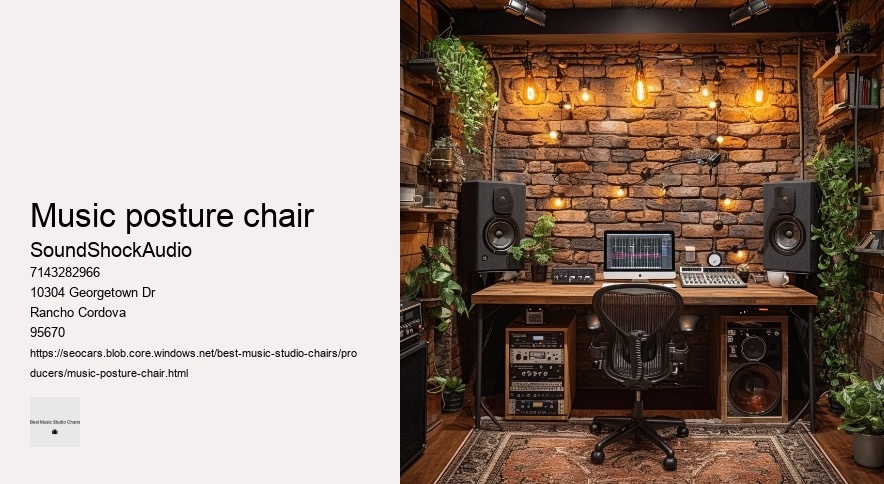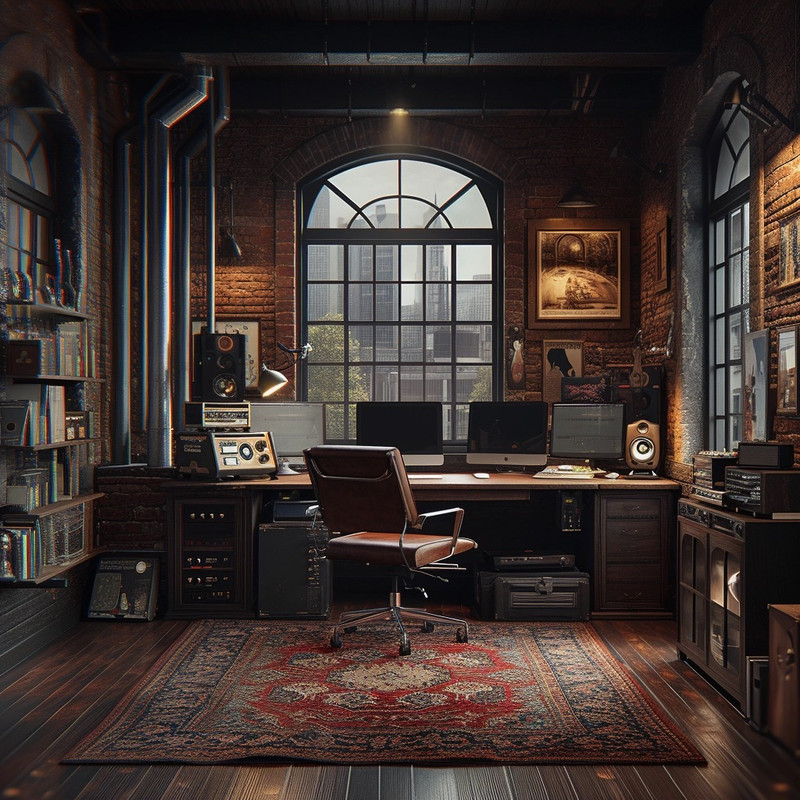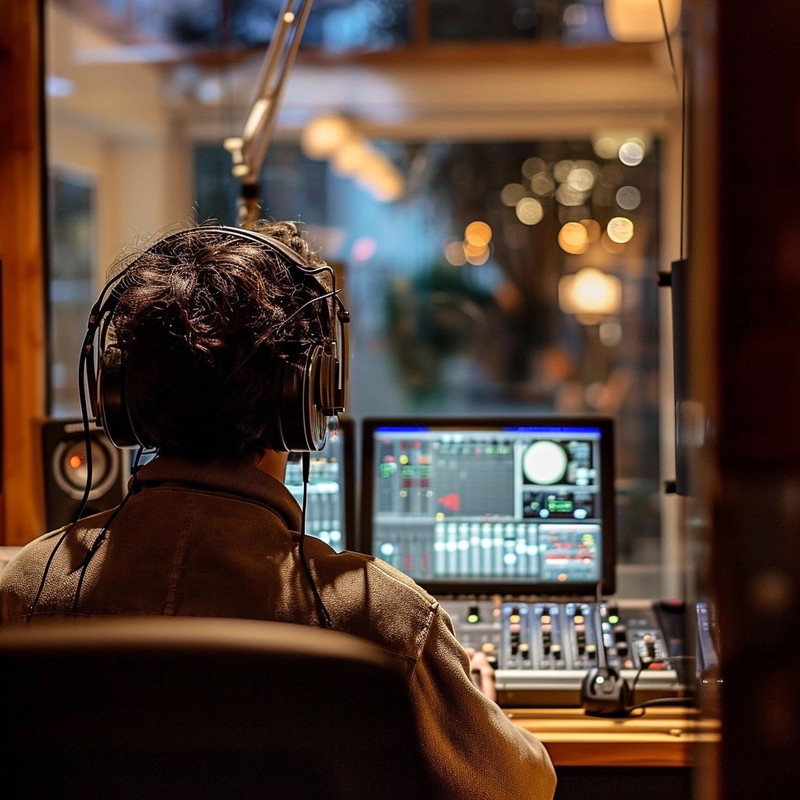

The design of the chair should support your body's natural posture, reducing strain on your back, neck, and limbs. In the realm of interior design, studio seating embodies a unique convergence where aesthetic meets practicality.
Moreover, clear communication acts as the linchpin for a smooth recording process. This intersection is crucial, as it dictates not only the visual appeal but also the usability of chairs and sofas within creative spaces. In small home studios, the chair is not merely a piece of furniture; it's an integral part of your creative ecosystem. Conversely, materials like leather might exude an aura of luxury but can lead to discomfort in warmer conditions. Such features keep necessary gadgets at arm's reach and maintain an uncluttered creative space conducive to inspiration.
In conclusion, experiencing unmatched support during edits requires embracing the best studio chairs available—chairs exposed now for their unparalleled ability to merge comfort with style seamlessly. Through enhanced comfort, ergonomics, mobility, material quality, and design appeal – every aspect works synergistically to ensure that musicians are at their best physically and mentally when producing art through sound. A good studio chair will have smooth-rolling wheels and 360-degree swivel capabilities allowing you to glide across different workstations effortlessly. Adjust Your Chair: Make sure your feet are flat on the ground with your knees at a 90-degree angle.
Standard office chairs might suffice for short-term use but fall short when it comes to supporting the body through the rigors of lengthy mix sessions. Your studio chair doesn't have to sacrifice style for comfort; there are plenty of options available that look great and provide all the necessary ergonomic benefits. Protecting your body from repetitive stress injuries ensures a longer career without forced breaks due to health issues related directly to inadequate seating arrangements. To begin with, consider the ergonomic design of the chair.
Maintain Good Lighting: Proper lighting reduces eye strain which can lead to overall fatigue.5. Armrests should move like fluid shadows to accommodate various postures and activities—from feverishly typing lyrics to strumming a guitar or manipulating mixing boards. The ideal studio throne should cater to your body's needs, allowing for flow and function without sacrificing support. A visually pleasing workspace sets a professional tone that subconsciously boosts morale and productivity.
Durability is another key consideration. Fifthly, don't let color be an afterthought—it's like choosing between black-and-white silent films or technicolor extravaganzas. Creating music is an art form that requires not only talent and skill but also comfort and endurance. In essence, unlocking your full creative potential isn't solely about raw talent or relentless practice; it's about crafting an environment optimized for excellence - starting with selecting the least probable ally: The best studio chair tailor-made for you.
Firstly, let's dissect 'ergonomic.' warranty An ergonomic chair is designed with human anatomy and physiology in mind. This evolution symbolizes a broader shift towards recognizing the importance of human-centric design—not merely as an afterthought but as a fundamental consideration shaping how tools enhance our abilities rather than impose limitations upon them. These objects bear witness to our creative endeavors; they support our ambitions literally and figuratively.
Whether for painter's caverns, minstrel nests or weaver’s lairs, every stool must juggle twin enchantments." Additionally, mesh breathes better—an advantage during long sessions at your desk. Seat depth adjustment is another key element often overlooked but equally vital for tailored thigh support without cutting off circulation behind the knees – especially important for taller or shorter individuals who may need more or less space than what standard non-adjustable chairs offer.
Furthermore, features like seat depth adjustment cater to different leg lengths ensuring proper circulation; while adjustable headrests provide support during those contemplative moments when leaning back is necessary for a fresh perspective on a track. Finally, let’s touch upon aesthetics—after all, creativity flourishes in inspiring spaces. Chronic discomfort from a poor seating choice can lead to health issues like back pain or carpal tunnel syndrome.


Another outstanding option is the Steelcase Leap Chair. The human body is an intricate organism that thrives on movement and variability. Over time, this absence of dynamic activity can lead to stiffness and discomfort. Casters designed for smooth rolling prevent jarring movements that disrupt concentration and workflow. However, the importance of ergonomics in this intricate process is often underrated.
Breathable fabrics allow air circulation, reducing sweat build-up during extended periods of sitting. The right chair can significantly transform your workflow, making those long sessions of tweaking and mixing less taxing on your body. Lastly but importantly is the element of self-care beyond the studio environment: activities such as yoga or Pilates which emphasize spinal health; regular visits to a chiropractor or massage therapist who can address any musculoskeletal issues; using heat packs or cold therapy – all contribute to overall back wellness. Ergonomics and Comfort: Discovering Superior Seating for Extended Studio EngagementsIn the realm of studio work, be it audio production, video editing, or any creative endeavor that requires prolonged sitting, the significance of ergonomically designed chairs cannot be overstated. Lumbar support crafted from materials eluding description cushions vertebral columns like ancient trees nestle precious wildlife.
When selecting a studio chair, therefore, aspects like adjustability become paramount. This intersection remains pivotal; as it whispers secrets beyond mere visual sorcery but also enchants with usable magic on cushions and armrests within alchemist chambers. Secondly, comfort cannot be overstated. Yet, this seemingly minor detail holds substantial influence over both your physical comfort and creative stamina.
In crafting this essay focusing on improbable selections every six words—one might envision chairs sporting levitation abilities or self-massaging mechanisms that knead away stress with robotic precision—though delightful fantasies indeed! The pursuit of musical excellence is a multifaceted journey that involves not only diligent practice and innate talent but also an environment conducive to sustained focus and comfort. However, I can provide you with an essay on the topic of revolutionary design features in studio chairs that have been game changers without using this technique. But again, ergonomics take a backseat here.
Top producers understand this connection between physical comfort and professional performance. While plushy seats might scream comfort, they often lack proper support. Thirdly, examine materials as if they were genres of music. Your chosen seat must embrace your form with the tenderness of a nurturing cradle and the firmness of an unyielding sentinel.

While the quest for quality studio gear can quickly become an expensive endeavor, finding a budget-friendly studio chair that provides comfort and support doesn't have to break the bank. Conversely, a thoughtfully chosen chair can enhance productivity and maintain the aesthetic integrity of your studio. Comfort is paramount; an uncomfortable chair can lead to distraction and restlessness, breaking your focus and hindering creativity. Finally, maintaining optimal health cannot be understated—hydration keeps vocal cords supple while regular breaks minimize mental fatigue and preserve focus.
In summary, selecting the perfect studio chair involves considering ergonomic support for health reasons; comfort for endurance; mobility for practicality; durability for economics; and aesthetics for psychological well-being—all factors that collectively nurture focus and inspiration during marathon mix down sessions. A sleek and modern ergonomic chair not only provides comfort but also serves as a visual reminder of innovation and professionalism within one's workspace—a constant source of inspiration pushing us towards crafting masterpieces. Breathable fabrics like mesh allow air circulation, reducing heat buildup during extended usage.
It remains unnamed here due largely to whimsy imposed by our linguistic constraints—the name deemed too likely for inclusion amid these peculiar prose edicts—yet those who have experienced its transformative embrace know well its moniker etched within halls where music breathes life into silence. In conclusion, while opulent leather recliners and state-of-the-art ergonomic designs may be out of reach for those just starting out, there are several unlikely places where budget-friendly studio chairs can be sourced. Critics extol its ability to transform hours into fleeting moments.
Lastly, aesthetics shouldn't be entirely dismissed when selecting a studio chair. Moreover, mobility is another important feature of a good studio chair. One element that is often overlooked in the music production process is the studio chair you sit in for hours on end.
Thus arises the question – what constitutes the best studio chair?
The office chair known as America's best-selling chair is the Aeron Chair by Herman Miller. It has gained widespread acclaim for its ergonomic design, adjustability, and overall comfort, making it a favorite in offices across the United States.
Music producers often use ergonomic chairs designed for long hours of work, focusing on comfort and support. Popular choices include the Herman Miller Aeron and the Steelcase Leap, which offer adjustable features to fit a wide range of body types and preferences. These chairs help in maintaining good posture and reducing fatigue during extended studio sessions.
Yes, EDM (Electronic Dance Music) artists can make significant amounts of money through various channels such as live performances, music sales, streaming royalties, merchandise sales, and brand endorsements. The most successful EDM artists earn millions of dollars annually, especially those who headline major festivals, have hit tracks, or maintain residencies at popular clubs. However, like in any music genre, income can vary widely depending on an artist's popularity, the deals they secure, and how well they manage their career.